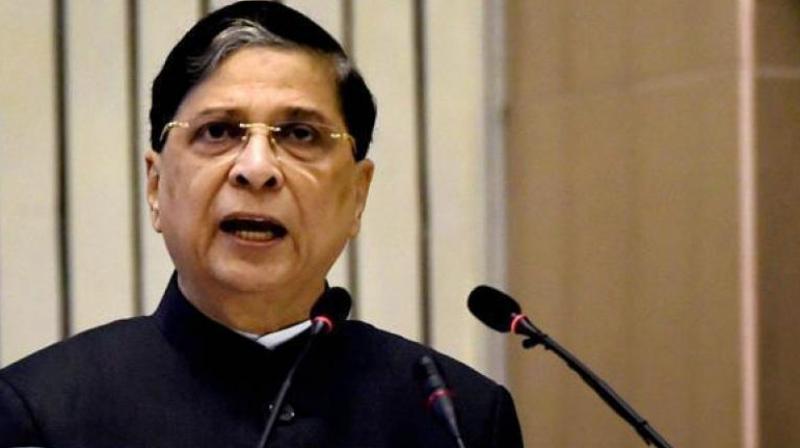Never in the history of India have the Supreme Court and the Chief Justice of India (CJI) being targeted to the extent seen in the past few months. The working of the highest court of justice has been questioned by politicians & “experts” shouting on the TV debates, making a complete mockery of the judicial system of India. While no one suggests that the Supreme Court and the CJI be not questioned, the real reasons behind it may not inspire much confidence among the general public.
The entire saga of interfering in working of the Supreme Court by the PIL activists and opposition leaders started after the press conference by four sitting Supreme Court judges. Not going into the need for it, the press conference gave the opening which a particular group was desperately waiting to obtain. Following the press conference, several PILs were filed questioning the authority of the CJI in allocating cases.
CJI Dipak Misra sent a powerful message to the ones undermining his position and office. Hearing one of the PIL, a bench comprising CJI Dipak Misra himself along with Justices A. M. Khanwilkar and D Y Chandrachudd ruled earlier today that the CJI was “first among equals” and had the constitutional authority to allocate cases as well as set up benches to hear them. The PIL was seeking guidelines for allocation of cases and constitution of benches. Former Law Minister Shanti Bhushan has also filed a similar PIL through his advocate Prashant Bhushan.
The PIL filed by Mr Bhushan questions the power vested in CJI alone and suggests that the CJI should exercise such authority only after consultation with other senior judges. It even infers from the press conference of four senior judges that situation in the Supreme Court was “not in order” and many “less than desirable” things had taken place. It also requested that the PIL be heard by a bench of judges without the CJI being part of it.
The question arises, why is there a sudden realisation of the powers vested in the CJI by the Indian Constitution? CJI Dipak Misra is not the first Chief Justice of India, so why a former Law Minister realises now that there is too much powers vested in one person. The Congress-led opposition had even tried to move an impeachment motion against CJI Dipak Misra. As reported, only Kapil Sibal, who was not so long ago representing the Sunni Waqf Board in the Ayodhya case favoured the impeachment motion within the Congress party. The impeachment motion is on the back-burner for the time being after this failed attempt.
These continuous attacks on the CJI Dipak Misra by a certain section of “intellectuals” are a result of some brave and landmark judgments by him. CJI Dipak Misra was heading the bench that rejected the plea to spare Yakub Memon. He gave the landmark judgement on playing the National Anthem in cinema halls. CJI Dipak Misra had also upheld the death penalty handed to the killers of Nirbhaya. In yet another historic decision, CJI Dipak Misra had directed the government to ban websites containing child pornography.
The past rulings clearly indicate that the present CJI will do everything in his power to ensure that justice is delivered. Efforts are apparently being made by the opposition and other so-called intellectuals to make things difficult for CJI and if possible even impeach him. Notably, CJI Dipak Misra is heading the bench in two crucial cases: the Ram Mandir case and death of CBI judge BH Loya. To make matters worse for the opposition, CJI Misra had indicated he would fast-track the Ram Mandir case.
The ploy is to ensure that verdict in both the cases is delayed until 2019. This will help the opposition to gain electoral benefits, assuming that a Ram Mandir verdict would favour BJP. The delayed verdict in the Justice Loya case will allow Congress to use the unfortunate death of Justice Loya to malign the image of Amit Shah. CJI Dipak Misra is set to retire on October 2, 2018, and all these tactics are merely aimed at ensuring that the outcomes of these cases are delayed until he retires.
